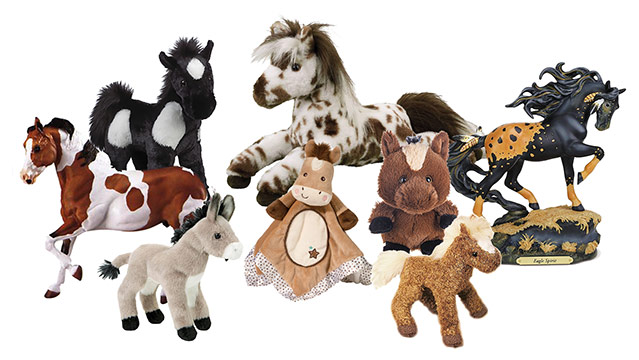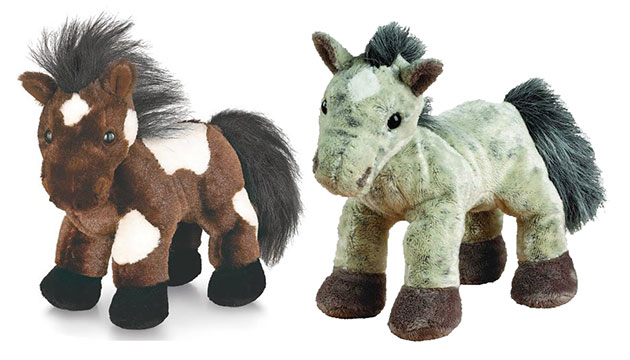
Animals N More carries a large selection of horse stuffed animals and horse related gifts. We also have some facts and information on the horse, shown below. We hope you will enjoy your visit.
Find a variety of horse related gifts at Animals N More. You can buy these online at our sponsor's online gift shop: www.jeanniescottage.com. We carry horse plush from Douglas Cuddle Toys, Enesco Trail of the Painted Ponies, Ganz plush toy horses, a selection of Breyer horses and many assorted horse gifts including a few of the Webkinz Ponies.
You will find these colorful and beautiful pieces at our sponsor's online Gift Shop.
The Webkinz line of plush toys had a whole herd of horses, including the
Clydesdale, Black Fresian, Pinto, Grey Arabian, Brown Arabian, and Albino. Many of these are sold out, but we still have a few. Check the Gift Shop to buy these Webkinz Horses.
This is Oats, a Ty Beanie Baby. There are some Beanie Baby Horse stuffed animals in our sponsor's online Gift Shop.
The horse
belongs to the genus Equus and is a member of the family Equidae. The domestic horse is Equus caballus. Three groups of this genus still live in the wild and include the Zebra of Africa, the ass of Asia and Africa and Przhevalski's horse of western Mongolia.
The modern horse is a perissodactyl, or odd-toed ungulate. Other members of this group include the rhinoceros and the tapir. The hoof is actually a middle toe surrounded by a horny outer covering. There are remnants of a second and fourth toe on either side of the foot above the hoof. The horse has a simple stomach. A cecum is located where the small and large intestines meet. It is here that ingested food is processed. The cecum in large horses can hold up to 10 gallons of food.
Horses mature at the age of two, but are not generally bred until the age of three. Usually one foal is born after a gestation period of 11 months. Twins are rare.
The domestic horse is recorded in Babylonia in about 2000 B.C. These horses developed into the Arabian breed. Another strain was developed in Europe and this one became the modern draft horse. Today's ponies were developed in the British Isles. The horses that were introduced into the Americas were of the Arabian type, brought by Spanish explorers.
Horses over the last 300 years have been developed into a variety of breeds for many different types of work. They are various sizes, from the Arabs at about 60 inches at the shoulder, to the draft horses, which are 68 inches or more at the shoulder. Ponies are about 42 inches at the shoulder. They have a life span of from 25 to 30 years. Some interesting breeds include the Gypsy Vanner and the Appaloosa.
Class: Mammalia | Order: Perissodactyla | Family: Equidae | Genus: Equus | Species: E. ferus






